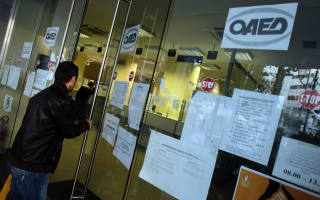Real wages lag those of 2009 by some 30%

Salaries last year stood at 83.6% of the level they were at before the crisis, in 2009, while at prices without the inflation effect they were at just 71.3%, according to ELSTAT data processed by Eurobank and presented in its weekly bulletin.
This practically means that in the last 13 years purchasing power per employee has decreased by almost 30%.
According to the description of the bank’s analysts, after the record losses suffered in the first years of the crisis, 2010-2014 (-20.1% at current prices and -25.1% at fixed prices), salaries remained stagnant on average in the period 2015-2020. In 2021 and 2022, wages increased by 2.5% and 1.5% respectively, while the first quarter of this year saw an acceleration in the rate of change to 5.6%.
In fact, as there was also an increase in the remaining categories of primary household income, annual income increased significantly by 11.3%. However, if inflation is also taken into account (at 9.3% last year), it follows that real salaries in Greece shrank by 7.1% in 2022, after an increase of 1.9% in 2021, while in the first quarter in 2023 the decline was clearly milder at 0.7% due to the deceleration of inflation and further growth in nominal wages, Eurobank said in its bulletin.
The bank’s analysts note that while at the end of 2013 – i.e. at the peak of the initial effects of the debt crisis – one of the most important challenges facing the Greek economy was the de-escalation of the unemployment rate and the increase in employment, 10 years after the rate of unemployment has fallen significantly and employment has recovered a significant part of the losses. And while these positive developments must continue, the recovery of real salaries is equally important.
“To a large extent, the stagnation of real wages in Greece, as well as the low GDP per capita compared to the rest of the EU-27 countries and the eurozone, is the flip side of the coin of the stagnation that characterizes labor productivity,” notes the bulletin. “Therefore, an increase in labor productivity is key to the recovery of real wages per employee. The latter can be achieved through productive investments, reforms, and the effective import (or even production where possible) and diffusion of new technologies.”





